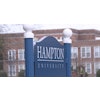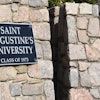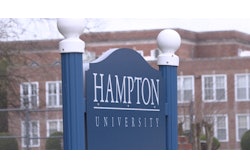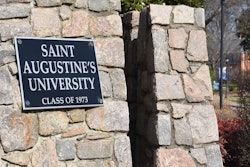When Anthony Grant, associate director of admissions at Earlham College in Indiana, attended a college fair in New Mexico this past summer, a student asked him to tell her more about the discrimination she heard had taken place on campus recently.
“I would say that was the most direct question that I ever had from a student,” says Grant, an eight-year veteran admission counselor.
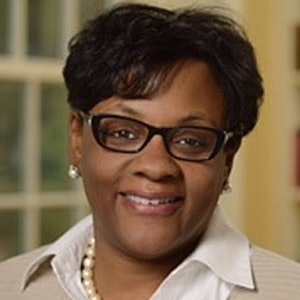 Dr. Cheryl Holcomb-McCoy
Dr. Cheryl Holcomb-McCoyGrant told the inquiring student about the protest that shut down classes at Earlham back in February 2016. He also spoke of how the protest was sparked in part by students feeling like some faculty members harbored biases and had discriminated against them.
Grant also mentioned the list of demands that students had presented, including one that called for more faculty of color and faculty from outside the U.S. He even related how as an administrative faculty member and a person of color there were “many things” about the institution that he would like to see changed himself.
“And I told her, I know you’re looking at a wide range of schools and you have to think about what’s the best fit for you,” Grant recounts. He told her he didn’t want to “scare her off” but rather wanted to present an accurate picture of what Earlham students are “talking about now.”
“But I also said to her that I really hoped that she takes a closer look at us because as she’s thinking about discrimination based on social constructs, I do hope that students like her could come to Earlham and be a part of many of the changes that I hope and that our students hope to see,” Grant says.
While the conversation that Grant had at the college fair was in many ways initiated by the inquiring young student, Grant and leading experts say college admission counselors need not wait for students to bring up specific incidents on campus to have a candid conversation about what students are likely to encounter once they enroll.
Cheryl Holcomb-McCoy, dean of education at American University in D.C. and a former professor of counseling, says there’s a “huge need” for counselors — particularly high school counselors — to be “authentic and real” about what students could possibly experience on campus, especially when counseling students of color or students who belong to any type of culturally distinct group.
“What we’re seeing today on college campuses with increasing diversity of student populations is that there is not necessarily a tolerant community university campus,” says Holcomb-McCoy, who served as a consultant for former first lady Michelle Obama’s Reach Higher initiative. Among other things, the initiative called for more support for counselors to help more kids get into college.
“I don’t know if it’s the political climate that we’re in. I’m sure that has something to do with it. But we’re just seeing a rise in the type of hate speech, experiences of micro-aggressions in classrooms and outside of classrooms,” Holcomb-McCoy continues. “Students are not necessarily aware that these types of experiences are going to be a part of their overall college experience.”
Indeed, at a recent forum at the University of Maryland at College Park — where last spring Bowie State University student, Lt. Richard Collins III, was allegedly stabbed to death by a White UMD student — U.S. Rep. Anthony Brown D-Md., cited a recent statistic that shows hate watch groups have tracked 150 racist incidents on college campuses in 33 states since last fall.
While opinions vary greatly about there being a link between racist incidents and President Trump’s election, the proliferation of such incidents is all too real.
“Something this year is different,” says Brown. “These groups had not been highly engaged on college campuses in years past, but this year something has changed. The fact is that these issues reflect the complexities of race and prejudice in this country, issues that we’ve never fully worked through, a part of our nation that we’ve not yet perfected.”
Brown then announced plans to introduce legislation titled “Creating Accountability Measures Protecting University Students Historically Abused, Threatened and Exposed to Crimes,” or the CAMPUS HATE Crimes Act.
Among other things, the bill states that no institution of higher education shall be eligible for federal financial aid unless it certifies to the secretary of education that it has “adopted and implemented a program to prevent and adequately respond to hate crimes within the jurisdiction of the institution or by students and employees.”
While the fate of the legislation is unclear, if it passes, institutions of higher education would also be required to educate students about what differentiates hate crimes from constitutionally protected speech.
Counselors have a distinct role to play in such education.
Holcomb-McCoy says it is important for counselors to help students “talk through” how they would manage events that challenge their sense of identity or deal with “hate-filled philosophies.”
“I think we’re doing students a disservice to act like you’re going off to the university and you’re never going to experience racism,” Holcomb-McCoy says. “We pretty much are assured that there are going to be experiences where students will have experiences with others who have feelings of hate or feelings that certain groups are inferior to others.
“It’s a sad thing, but we are pretty sure they’re going to have those experiences if they’re attending universities in general, whether HBCUs or TWIs,” she says, using the acronyms for historically Black colleges and universities and traditionally White institutions, respectively.
Indeed, as of late, neither type of the above-mentioned schools — or the range of schools in between, for that matter — have been immune to acts of racial hostility or other forms of hostility.
Holcomb-McCoy’s own campus has been beset by a series of such events, including one in which bananas were found hanging from strings in the shape of nooses at three different locations on campus of the elite private university in Washington, D.C., last spring. And last fall, some White students reportedly left rotten bananas at one Black student’s door and threw one at another Black student.
Just a few miles across town, at Howard University, a prominent HBCU, two White high school girls visiting the campus from out of state this summer say they were accosted by students on campus because they were wearing “Make America Great Again” apparel in support of President Donald Trump.
Notably, the Howard incident took place in the wake of the death of Heather Heyer, a counter-protester who was killed while protesting a White nationalist rally in Charlottesville in August. Feelings were still raw throughout the nation over Trump’s initial failure to condemn the White nationalists, White supremacists and neo-Nazis who attended the rally.
Holcomb-McCoy says the incident in Charlottesville is “a really good starting point for high school counselors this year to be talking about what students would do if they were first-year students at the University of Virginia.”
Dr. Adrian K. Haugabrook, vice president for student success and engagement at Wheelock College in Massachusetts, which has also been the site of protests in recent years, says it is important for counselors to begin conversations with students as early as middle school about what they might encounter in college.
“We’re not just talking about college students who are addressing these issues, but also high schoolers and middle schoolers who are activists,” Haugabrook says. “You’re seeing that keenness that students have at a much earlier age, so they’re bringing those concepts, the complexity of social issues, they’re bringing those with them into their postsecondary settings.”
Indeed, if anyone needed proof that the activism starts early for some students, consider the fact that the White supremacist rally that ended in tragedy in Charlottesville this summer was over the pending removal of a statue of Confederate General Robert E. Lee — a removal triggered by a petition started in 2016 by Zyhana Bryant, a then-15-year-old Charlottesville High School student.
Haugabrook also recommended that colleges and universities review the policies they have to “ensure they provide for the kind of space for protest and activism” and how contemporary protests might differ from the sign-wielding protests of old.
“The old school visual of people marching with signs, that is still a tried and true way of activism and protest,” Haugabrook says. “But as you know, people are using all kinds of platforms now to raise their voices.”
Haugabrook recommended that colleges and universities have some sort of “think tank” or “action tank” that can contemplate or anticipate what else might happen along the lines of protest and to ensure that there is space for students to voice their concerns.
Haugabrook also stressed the need for college admission counselors to be cognizant of the professional parameters that stand between counselors’ personal beliefs and activism versus their duty to students.
“So for any advising that I do with students or even other staff … I don’t say, ‘I’d be out with you if I could but I can’t because I’m a vice president,’” Haugabrook says. “I have to think about the institution as an agent of the institution.
“But what I can do or say is in my role at the institution, I have a position which is to uphold the mission of the institution and protect the integrity of the student voice. People begin to understand that in that way.”
Mandy Hart, associate dean of admission and coordinator of diversity outreach at Amherst College in Massachusetts, says “value alignment” is critical for admission counselors when it comes to resolving the tension between reflecting their institutions in a positive light versus in an authentic way. Sometimes, she says, the tension can’t be resolved — and in those cases it’s time to think about working somewhere else.
Amherst experienced a protest known as the Amherst Uprising in 2015. Among other things, students protested what was described as the “negative social climate created towards our peers of color and other marginalized groups.”
“At the end of the day, if I don’t have that value alignment, and I don’t believe my institution is responding appropriately to incidents or responding to widespread climate issues, then I as a professional would not be able to reflect my institution in a positive way,” Hart says. She added that such a scenario would “kind of lend itself to the idea that it’s not the right fit for me as a professional.”
Grant says, earlier in his career, he was more concerned about making sure that he always made the institution where he worked “look good.”
But that has become less of a concern as he has evolved and “become more solidified in my own racial identity as a Black person and as a person of color.”
He says it is far more important to make sure that what he tells students is consistent with what is really happening on campus.
“Am I speaking to what I’m hearing from the student body, what I’m hearing from the institution and seeing the institution react to the student body?” Grant says. “Am I speaking to the reality of that? Am I speaking to all of the nuances that makes the institution what it is? That means talking about good things, as well as those challenges those institutions have.”
This article was first published in the Journal of College Admission.
Jamaal Abdul-Alim can be reached at [email protected].



